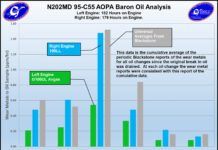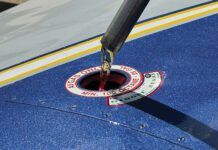What’s So Bad About Vacuum Systems?
You guys produce a great magazine—keep up the good work. But, regarding your December 2015 article about switching to electronic attitude gyros, you act like maintaining a vacuum system is akin to electrics in an old British sports car. Now the FAA is joining the bandwagon of bashing vacuum systems. Vacuum systems are not that bad.
I have flown my Beechcraft Debonair 3900 hours over 20 years in all kinds of weather, including approaches to minimums and in icing and thunderstorms. My vacuum system has never failed. I replace the wet pump every time I replace the engine, which the last time was at 2250 hours. My gyros are reliable, probably because I fly frequently. My vacuum attitude gyro failed once right after I bought the plane probably because the last owner did not fly much. My vacuum directional gyro was replaced once due to excessive precession and will need to be replaced again soon. My RC Allen backup electric attitude gyro also failed once. New vacuum gyros cost $800 new, on average, or $500 for overhauled ones. Electronic attitude gyros cost $5000 to $8000. I’ll keep my vacuum system.

Mike McNamara
via email
Perhaps we were a bit too hard on the venerable instrument vacuum system, Mike. But not all owners enjoy the favorable reliability you’ve experienced in your Debonair. As you noted (in a follow-up discussion), you don’t have an attitude-based autopilot like the BendixKing KFC-series, as one example. The vacuum-driven attitude gyros for these autopilots are shockingly expensive to overhaul—far more than the best-case $500 overhaul you describe. Electronic models promise to keep these long-term costs under control. But as we noted in the article, the BendixKing KI300 is the only electronic attitude gyro with autopilot pickoff, so the problem isn’t solved.
Lycoming Fuel Pumps
I am writing to give you a heads up about a problem with new Lycoming fuel pumps, which has turned into a Lycoming mandatory service bulletin. The pump that came installed on a factory remanufactured engine for our Mooney M20J initially wept a couple of drips of fuel when the engine was shut down, but by 25 hours of operation it was pumping 1 GPH out the overflow tube.
When I asked AirPower (the source for our engine) for a warranty replacement, I was told it would be four to six weeks because so many pumps were defective. I was given permission to alternatively buy a Tempest fuel pump so we could get the aircraft back in the air. We returned the defective pump and the new one to AirPower, but immediately received invoices from Airpower requesting $421.16 for the replacement fuel pump sent by Lycoming.
I submitted to AirPower the labor bill for swapping the pump, the cost of the Tempest replacement and the freight charges. AirPower says it takes six weeks to resolving warranty claims, but I considered myself lucky to be reimbursed anything for my out-of-pocket expenses in 30 days.
Paul Lisowski
via email
Lycoming’s mandatory service bulletin 621A states it will pay (through an authorized distributor) for reimbursement of the replacement pump, freight charges and no more than 1.5 hours of removal and reinstallation labor. If a genuine Lycoming pump is not available, it allows the substitution of an FAA and PMA-approved replacement. Sounds like you did everything right.
Lycoming says roughly 1800 pumps are affected and is caught up on replacements. AirPower’s Michelle Barnes told us she isn’t aware of any backlog in the processing of claims and has a dedicated warranty department to handle them. She said while every case is different, AirPower will coordinate the swap, even without having the failed pump in hand. Warranty consideration is available until September 2016, which is one year after the release of the service bulletin.
Garmin Pilot Approach
I have the Garmin Pilot app and questioned Garmin customer service about it not including initial approach procedures in the flight plan feature set (Garmin did add SIDs and STARs to flight plans).
Garmin customer service replied that the reason IAPs have not been added to flight plans is because the FAA is so strict on IFR-certified devices. It acknowledged that ForeFlight and other app makers have been getting away with IAPs.
This response is baffling because neither the Pilot app or the iPad on which it runs on are certified devices, so they would not be under the regulatory jurisdiction of the FAA.
Robert Josephs
Chicago, Illinois
Should you crash, anything in the aircraft could be under FAA and NTSB jurisdiction, but we get your point. We asked Garmin’s Jessica Koss about the data. “Adding instrument procedure waypoints to a flight plan is on Garmin’s road map as it continues to expand the Garmin Pilot interface,” she said.




